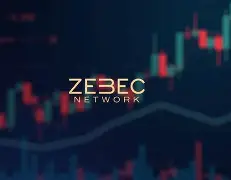Zebec Network is revolutionizing the way digital payments work by introducing real-time, continuous money streaming. As a decentralized payment protocol originally built on the Solana blockchain, Zebec provides a seamless system for businesses, employees, and crypto users to automate payroll, manage treasuries, and even use crypto debit cards in everyday life.
Backed by leading investors such as Circle, Coinbase Ventures, and Solana Ventures, Zebec has raised millions to scale its infrastructure. It now stands as one of the most practical and widely adopted Web3 financial tools.
What is Zebec Network?
Zebec Network is a real-time, programmable money stream protocol. It allows businesses and individuals to send payments second-by-second, rather than waiting for fixed intervals like weekly or monthly. This continuous payment model enhances financial freedom, reduces cash flow stress, and provides transparent tracking for both employers and employees.
The protocol is now compatible with multiple chains including Solana, Ethereum, BNB Chain, Base, and NEAR, and supports cross-chain functionality through its Nautilus Layer 3 solution.
Key Features of Zebec Network
1. Real-Time Payment Streaming
With Zebec, payments are sent in a continuous stream. Employers can distribute salaries in real-time while freelancers and DAO contributors can receive funds instantly as work is completed. This concept significantly changes how payroll systems function in the digital age.
2. Crypto Debit Cards
Zebec introduced its own crypto debit cards: the Silver and Black Cards. These cards are accepted in over 138 countries and allow users to spend crypto assets like USDC directly, without needing to convert them manually. The cards offer zero transaction fees and are tailored for both standard and premium crypto users.
3. On-Chain Payroll and Treasury
Zebec enables businesses to set up automated payroll, manage treasuries, and integrate budgeting and early pay features. These services are particularly beneficial for DAOs and blockchain-based startups aiming for transparency and efficiency.
4. Multi-Chain and Nautilus Layer 3
Originally built on Solana, Zebec now supports Ethereum, BNB, and Base networks, offering robust interoperability. Its Nautilus Layer 3 chain boosts transaction speed and reduces costs, handling up to 2,000 TPS with strong scalability potential.
Zebec Network Token (ZBCN)
The ZBCN token powers the Zebec ecosystem and comes with multiple utilities:
- Used for paying gas fees and transaction costs
- Staking for APYs and ecosystem rewards
- Governance rights in DAO decisions
- Exclusive access to premium services, lower fees, and new product features
With a capped supply of 100 billion tokens, over 1 billion ZBCN have already been staked by the community, indicating strong engagement and belief in the network.
Adoption and Market Outlook
Zebec Network ranks among the top 300 crypto projects globally. As of mid-2025:
- Price: Around $0.0019
- Market Cap: Near $140 million
- Trading Volume: Approximately $12 million per day
- Exchanges: Available on major centralized platforms including Crypto.com, KuCoin, and others
Zebec’s growing user base includes freelancers, Web3 startups, and payroll providers looking to embrace crypto-native operations.
Strategic Partnerships and Growth Plans
Zebec has formed multiple strategic alliances to boost its adoption:
- Partnered with Circle to support USDC streaming
- Integrated with traditional payroll companies through Payroll Growth Partners
- Launched DePIN hardware terminals for crypto point-of-sale systems
- Gained significant traction in Latin America, Southeast Asia, and the U.S.
The recent launch of the Zebec Black Card doubled the user base within weeks, making it one of the fastest-growing crypto debit cards globally.
Pros and Challenges
Advantages
- Real-time payments improve liquidity and trust in business transactions
- Multi-chain support makes Zebec versatile for various blockchain ecosystems
- Institutional support ensures longevity and credibility
- Strong token utility for staking, governance, and services
Challenges
- Adoption hurdles in traditional payroll environments
- Regulatory uncertainties around crypto salary structures
- Execution dependency on scaling cross-chain and DePIN plans
Future Price Prediction and Long-Term Potential
Experts believe that Zebec’s token, ZBCN, could see long-term price appreciation if:
- Streaming payments go mainstream in payroll sectors
- Crypto debit cards become widely accepted
- Nautilus chain attracts dApp developers
- Governance activity and staking participation continue growing
While the price could fluctuate short-term due to market conditions, the protocol’s long-term fundamentals remain strong, especially if the team continues to deliver on roadmap milestones.
Final Thoughts
Zebec Network is not just another DeFi protocol—it’s building the foundation for a real-time, on-chain financial world. By merging payment streaming, crypto spending, treasury automation, and governance, Zebec is positioned to lead the next generation of blockchain-based financial services.
Whether you’re a business aiming for smarter payroll or a crypto enthusiast looking for everyday use cases, Zebec Network offers one of the most practical, scalable, and community-driven platforms in the space.
If you’re considering investing in or using the Zebec ecosystem, understanding its token utility, payment infrastructure, and multi-chain roadmap can help you make informed decisions.
Also Read: Best crypto to buy now and invest in 2025
